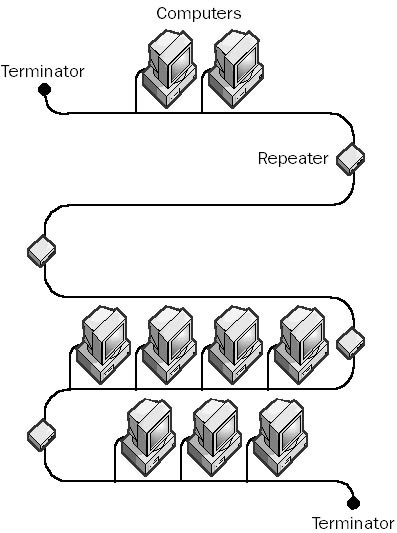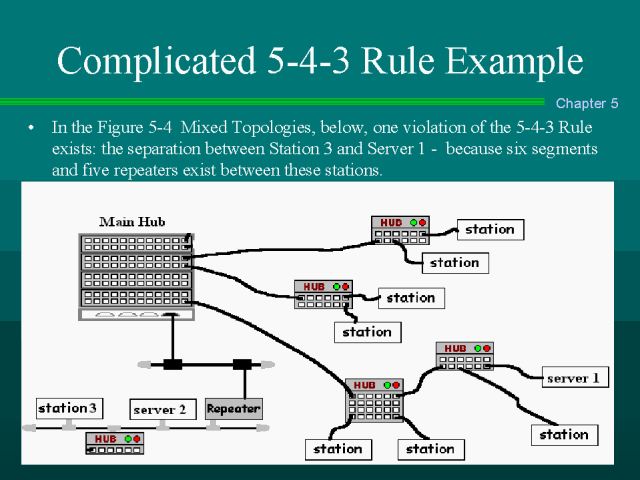5-4-3 rule
The 5-4 -3- rule or repeater rule is a term used in network technology. It says that in an Ethernet network with shared access in a tree topology ( 10BASE2, 10BASE5, 10BASE -T), a maximum of 5 segments with 4 repeaters may be used, with only 3 segments active terminals are connected.
Segments without active devices hot link segments or inter- repeater cables. Your task is simply to two repeaters to connect with each other to bridge larger distances.
Reason
In a classic Ethernet collisions may occur by the half -duplex operation. These should be avoided if possible, but must be reliably detected in any case (CSMA / CD).
The duration of the signal, and thus the maximum bandwidth of a broadcast domain, can be determined by the summation of running times for each segment and the delay of the coupling elements. This must lie below the round-trip delay. As this calculation can be relatively complex, a simpler repeater method was developed with the router rule that the time limitation can be met.
Note that the 5-4 -3 is generally applicable only to the area of a single collision domain. If the collision domain divided by the use of a Bridge / Multi- Bridge, the count starts again.
Repeaters, Hubs and Switches
In the case of 10Base - T two hubs connected together via an uplink, it counts as a repeater, or as two half a repeater. A new segment is created when another hub to a port ( the repeater ) for terminals (no uplink) is connected.
If instead of a hub, a switch used is as far as the 5-4 -3- rule shall not apply. A switch divides the segment into different collision domains. It also allows full-duplex operation, in which no more collisions can occur.
Fast Ethernet
For Fast Ethernet using the maximum segment length only two repeaters can be cascaded.
- Network architecture










